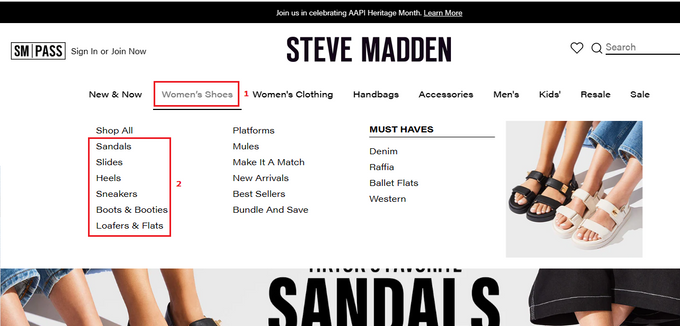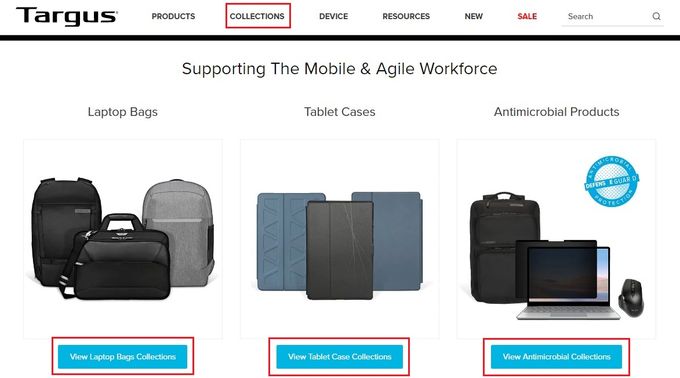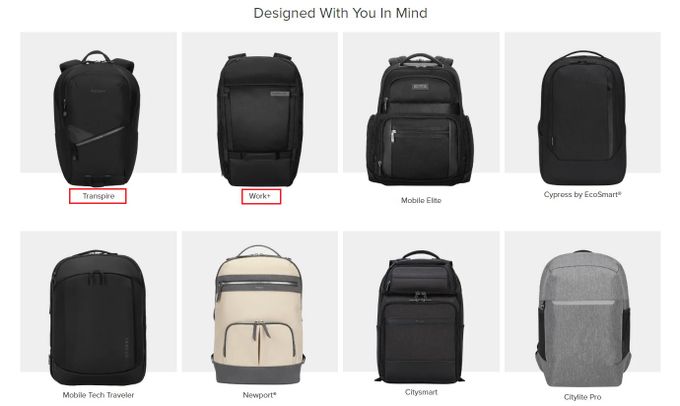Shopify Categories vs. Collections: Which Is Best for Merchandising?
There's no one-size-fits-all approach when it comes to Shopify categories and collections. It's essential to test your strategy to find what works best for your business.
Updated December 5, 2024.

Product organization is vital in eCommerce. 61% of Americans report that the most important aspect of online shopping is how easily they can find what they're looking for. Two fundamental ways of grouping your products are by category or collection. The distinction between them is sometimes blurry, and there's some debate about which method is better for organizing Shopify Search products.
Understanding the differences can help streamline your product display, improve searchability, and enhance the overall customer experience. Choosing the right structure can also have a direct impact on conversion rates and sales. We'll take a closer look at Shopify categories vs. collections to help you find the best strategy for your store's digital eCommerce merchandising efforts.
» Get your Shopify categories and collections under control with our eCommerce search and merchandising tools
What Are Shopify Categories?
A Shopify category is a group of products that share a common attribute. Categories are organized using a hierarchical structure, with products arranged from broad categories into smaller ones.
Categories can be used to group products by product type or topic. They allow customers to easily navigate through your store's products, as they can browse the categories to see all the products listed under them.
» Here are 7 creative ways to display your eCommerce merchandise
Example: The online footwear, accessory, and apparel retailer Steve Madden simplifies the shopper's navigation by creating a "Women's Shoes" category and using narrower subcategories like "Sandals" and "Slides".
Benefits of Using Shopify Categories for Merchandising
- Visually appealing layouts: Organizing products into categories creates a cleaner and more visually appealing storefront that draws attention and encourages browsing.
- Streamlined product management: Categories simplify the management of large product catalogs, allowing you to quickly add, remove, or edit products within specific sections.
- Improved searchability: Proper categorization ensures that customers can locate desired items through filters and search results, reducing frustration and enhancing satisfaction.
- Increased conversion rates: A well-organized, visually appealing storefront can make it easier for customers to complete purchases, boosting overall sales.
- Efficient marketing strategies: Categories allow you to target promotions or discounts for specific product groups, making campaigns more effective and focused.
» Check out more sales-boosting eCommerce merchandising strategies
What Are Shopify Collections?
A Shopify collection is another type of product grouping. It's based on shared characteristics, which are often defining factors in shoppers' product searches, like seasonality, promotional items, or vendor.
When organizing your products, you can choose between two types of collections: smart collections and manual collections.
Smart Collections
- Automatically groups products based on set conditions like tags, price, or stock status
- Updates dynamically as products meet or no longer meet the criteria
- Best for managing large catalogs efficiently
Manual Collections
- Requires manual addition of each product, offering full control over the selection
- Needs regular updates to add or remove products
- Ideal for curated or themed collections, such as seasonal promotions
» Read how you can search within Shopify collections to improve product discovery
Example: The mobile computing accessories company Targus organizes their products into collections like "Laptop Bags", "Tablet Cases", and "Antimicrobial Collections".
Within these, products are further grouped according to brand. So under "Laptop Bags", there are a number of brand collections like "Transpire" and "Work+".
Benefits of Using Shopify Collections for Merchandising
- Effortless product organization: Shopify collections allow you to group products by criteria such as type, color, or price range, making it easier for customers to browse and find what they need.
- Enhanced customer engagement: By enabling customers to filter products within collections, you reduce the chances of them leaving your store prematurely, keeping them engaged and increasing purchase potential.
- Time-saving smart collections: Smart collections automatically update based on product attributes, eliminating the need for manual updates and ensuring your inventory stays current with minimal effort.
- Targeted marketing opportunities: With collections, you can easily promote specific product groups, boosting the effectiveness of discounts, campaigns, and upselling strategies.
- Reduced cart abandonment: By helping customers quickly find relevant items, collections make the shopping journey smoother, reducing frustration and abandoned carts.
» Confused? Here's the difference between upselling and cross-selling
» Learn how to enhance your Shopify product collections through merchandising
5 Tips for Optimizing Categories and Collections
- Use SEO-friendly titles: Ensure your category and collection titles are descriptive and include relevant keywords. This will improve your store's visibility in eCommerce product search engines and make it easier for customers to find what they’re looking for.
- Add descriptions to boost SEO: While optional, adding a concise, keyword-rich description to each category or collection can enhance its search engine ranking, giving search engines more context about what’s inside.
- Group products logically: Organize your products in a way that aligns with customer segmentation, tailoring the experience to different customer needs.
- Link collections across your site: Improve your site’s SEO by linking to categories and collections from product pages, blog posts, or other sections. Internal links help search engines discover and rank your pages higher.
- Update categories and collections regularly: Keep your collections fresh by revisiting and updating titles and descriptions periodically. This not only ensures your content stays relevant but also helps maintain strong SEO performance as trends change.
» Need more help? See our complete guide to eCommerce search engines
» Check out these best practices to improve your online merchandising
Choosing the Best Option for Merchandising
When choosing whether to use categories or collections, it's important to consider:
- The size and complexity of your product catalog
- Your merchandising management goals
- Your customers' needs
For example, if you have an extensive product catalog, you may benefit from using categories to create a hierarchical structure. In contrast, if you have a smaller catalog, you may find collections more flexible and customizable.
» Understand how to optimize your eCommerce site's navigation for better merchandising
Find the Ideal Merchandising Strategy for Shopify
Effective merchandising involves structuring your products into logical groups to help organize your offerings and improve site search results. Personalization plays a key role in this process, as it allows you to tailor product displays based on customer behavior and preferences. Categories provide a convenient way to create a hierarchical structure for your products, while collections offer more flexibility and customizability.
The best approach is to try both options, considering the size and complexity of your product catalog, merchandising priorities, and customer preferences. Ultimately, an effective merchandising strategy, supported by eCommerce personalization, can enhance site search and boost your customers' shopping experience, leading to increased sales.
» Book a FREE demo and enhance your product displays with a powerful, optimized internal search engine for a better user experience








